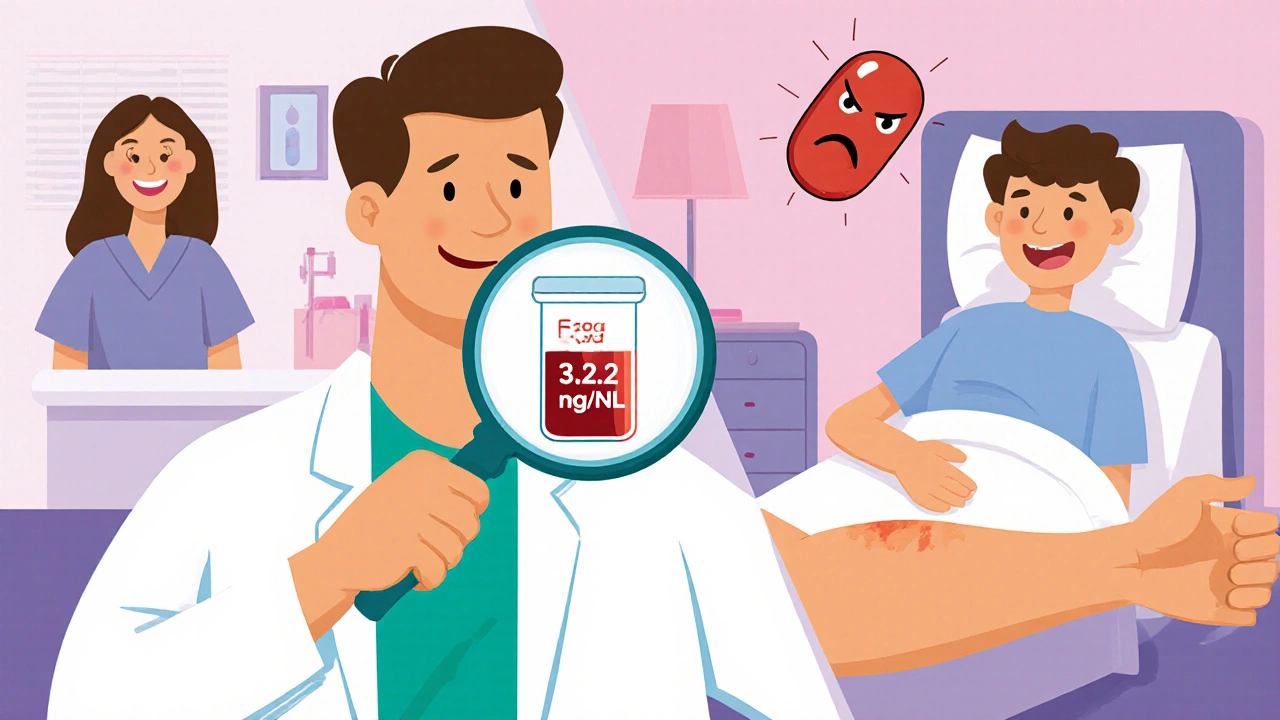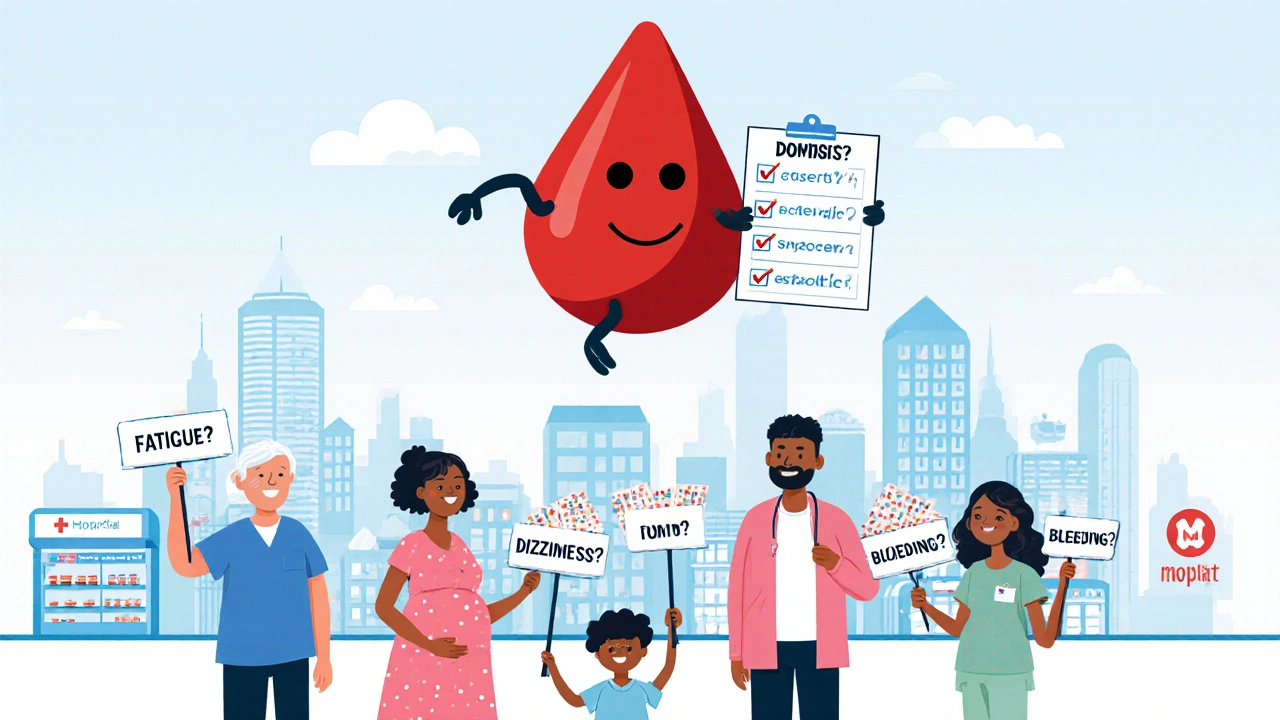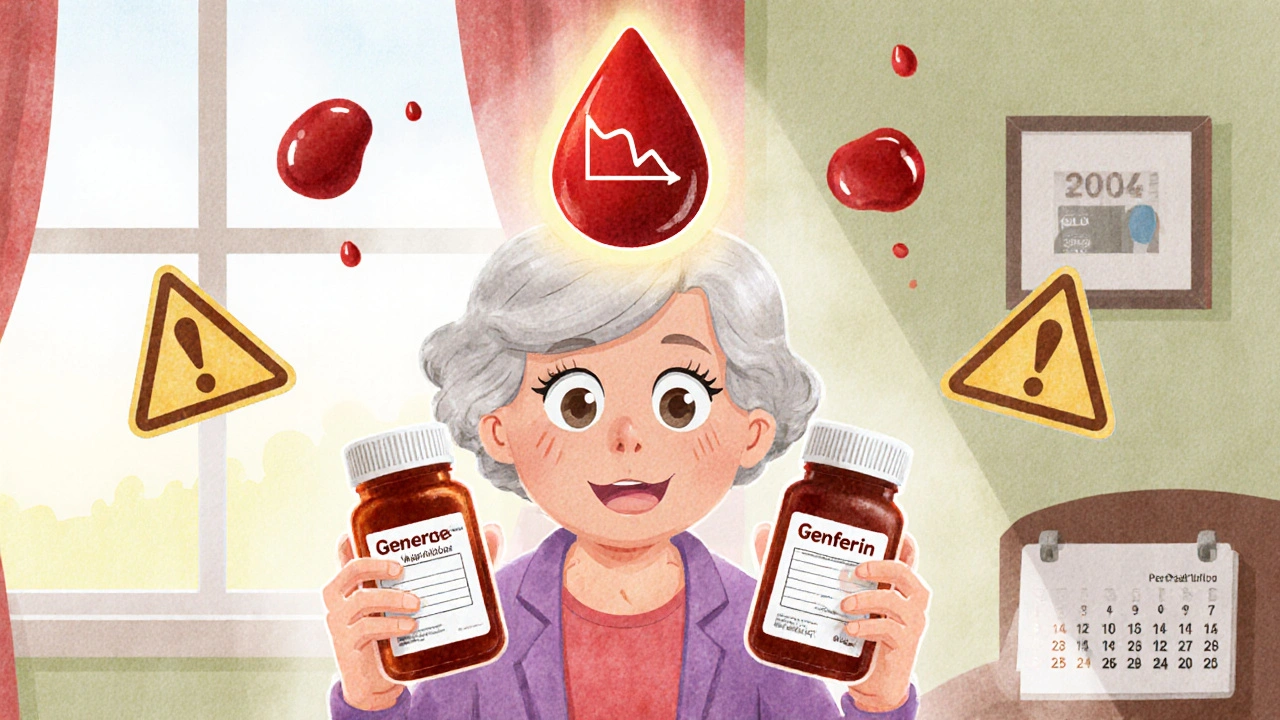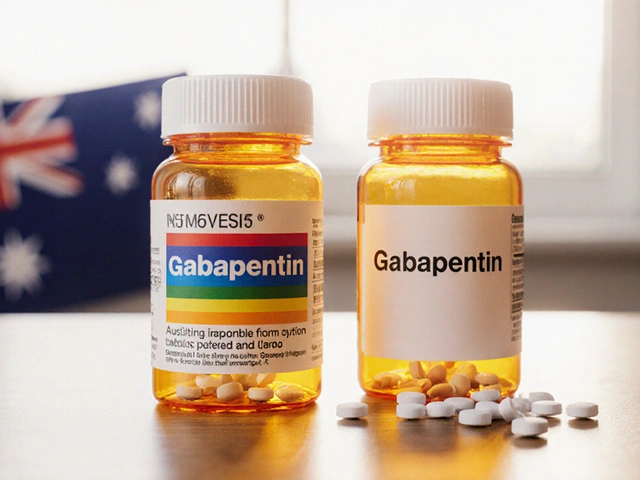Why Therapeutic Drug Monitoring Matters for Generic NTI Drugs
When a patient switches from a brand-name drug to a generic version, they expect the same results. But with NTI drugs-narrow therapeutic index drugs-that assumption can be dangerous. These are medications where even a small change in blood concentration can lead to treatment failure or serious toxicity. Think warfarin, levothyroxine, phenytoin, digoxin, and certain antiepileptics. For patients on these drugs, generic substitution isn’t just a cost-saving move-it’s a potential risk.
Unlike most medications, NTI drugs don’t have a wide safety margin. If your blood level drops just 10% below the effective range, the drug might not work. If it rises 10% above, you could have a seizure, a dangerous bleed, or heart rhythm problems. Generic versions are required to be bioequivalent, meaning their average absorption is within 80-125% of the brand. But that range is too wide for NTI drugs. One patient might get a generic that absorbs slower, another faster. Neither is illegal. Both could be life-threatening.
How Generic Substitution Can Go Wrong
Imagine a 68-year-old on warfarin after a stroke. She’s been stable for years-INR steady at 2.5. Her pharmacy switches her to a cheaper generic. The active ingredient is the same. The pill looks identical. But the fillers? Different. The coating? Different. Her body absorbs it slower. Her INR drops to 1.8. Two weeks later, she has another clot. No one knew why. No one checked her blood levels.
This isn’t hypothetical. A 2023 study in Annals of Internal Medicine found that 14% of patients switched from brand to generic warfarin experienced an INR outside the therapeutic range within 30 days. For phenytoin, the number was 21%. These aren’t rare errors. They’re systemic. The FDA’s bioequivalence standards were designed for drugs with wide safety margins. They weren’t built for NTI drugs.
Even more troubling: many clinicians don’t realize generic substitutions are happening. Pharmacists are allowed to switch without notifying the prescriber in most states. Patients assume their doctor knows. Doctors assume the pharmacy didn’t change anything. No one checks.
Therapeutic Drug Monitoring Is the Safety Net
Therapeutic Drug Monitoring (TDM) is the process of measuring the exact concentration of a drug in a patient’s blood to make sure it’s in the right range. For NTI drugs, it’s not optional-it’s essential. TDM doesn’t replace clinical judgment. It supports it.
Here’s how it works: a blood sample is taken just before the next dose (trough level). The lab measures how much drug is in the plasma. The result is compared to a known therapeutic range. If it’s too low, the dose increases. Too high? The dose drops. Simple. But powerful.
For example, a patient on levothyroxine who still has fatigue and high cholesterol despite taking the right dose? TDM can reveal they’re absorbing only 60% of the pill. Switching brands or adjusting the dose based on blood levels brings their TSH back to normal in weeks-not months.
Studies show TDM reduces adverse events by up to 35% in patients on NTI drugs. A 2022 review in Clinical Pharmacokinetics found that when TDM was used with phenytoin, hospitalizations due to toxicity dropped by 42%. For digoxin, the rate of life-threatening arrhythmias fell by 58% when dosing was guided by blood levels.

Who Needs TDM the Most
Not every patient on an NTI drug needs TDM. But some groups are at much higher risk:
- Patients switched to generic versions-especially if they’ve had stability issues before
- Older adults-slower metabolism, more drug interactions, reduced kidney/liver function
- Patients with GI disorders-Crohn’s, celiac, gastric bypass-poor absorption changes everything
- Those on multiple medications-drug interactions can spike or crush NTI levels
- Pregnant women-changes in volume of distribution alter drug levels
- Patients with unexplained symptoms-fatigue, dizziness, seizures, bleeding-when no other cause is found
One real case: a 72-year-old man on digoxin for atrial fibrillation. He started feeling dizzy and nauseous. His doctor thought it was aging. TDM showed his digoxin level was 3.2 ng/mL-more than double the safe upper limit. He was on a generic version. His kidney function had declined slightly. The generic had slightly different bioavailability. He stopped the drug for 48 hours, restarted at half the dose, and his symptoms vanished. No one would have known without TDM.
How TDM Works in Practice
Getting TDM done isn’t complicated, but it requires coordination:
- Identify the patient-do they have an NTI drug? Are they on a generic? Have they had recent changes in health or meds?
- Order the test-ask for the specific drug and the therapeutic range. Don’t just say “drug level.” Say “digoxin trough level” or “phenytoin serum concentration.”
- Time the draw-trough levels must be taken just before the next dose. If the patient takes their pill at 8 AM, draw at 7:45 AM. No exceptions.
- Wait for results-turnaround is usually 2-5 days. Some labs offer stat results in 24 hours for urgent cases.
- Adjust the dose-don’t guess. Use the level, the patient’s weight, age, kidney function, and clinical status to make the change. A 10% change in dose often isn’t enough. Sometimes you need to double or halve it.
- Recheck-after any adjustment, repeat the test in 1-2 weeks to confirm stability.
Many clinics skip steps 4 and 5. They get the result, see it’s “in range,” and move on. But “in range” doesn’t mean optimal. For warfarin, 2.0-3.0 is the range. But 2.5 is the sweet spot. If the patient’s INR is 2.1 and they’ve had a clot before, they’re still at risk. TDM isn’t about checking boxes-it’s about precision.

Barriers to Widespread Use
Despite clear benefits, TDM for NTI drugs is still underused. Why?
- Cost-a single test runs $50-$150. Insurance often doesn’t cover it unless it’s deemed “medically necessary.”
- Lack of awareness-many doctors weren’t trained on TDM for NTI drugs in residency.
- Delayed results-if the lab takes 7 days, the patient might have already had a bad outcome.
- Assumption of bioequivalence-the belief that “same ingredient = same effect” is deeply ingrained, even when evidence says otherwise.
Some hospitals have TDM programs. Others outsource to reference labs. But most primary care offices don’t even know where to send the test. That’s a gap in patient safety.
What Patients Can Do
If you’re on an NTI drug, especially a generic:
- Ask your doctor: “Is this a narrow therapeutic index drug?”
- Ask your pharmacist: “Has this been switched to a generic?”
- Keep a log: note any new symptoms-dizziness, fatigue, unusual bleeding, seizures, heart palpitations.
- Request TDM if you’ve had a recent change in meds, health, or diet.
- Don’t assume your labs are enough. INR, TSH, and drug levels are different tests.
Patients who speak up reduce their risk. One woman on levothyroxine asked for a TDM after her symptoms returned. Her level was 20% below target. Her dose was increased. Within 3 weeks, her energy returned. She said, “I thought I was just getting older. Turns out, I just needed the right pill.”
The Future of TDM and Generic Safety
Regulators are starting to pay attention. The FDA now recommends TDM for certain NTI drugs when switching generics. The European Medicines Agency has issued similar guidance. Some states now require pharmacists to notify prescribers before switching NTI drugs.
But the real change will come from clinical practice. TDM needs to become routine-not for everyone, but for the right people at the right time. It’s not expensive. It’s not complicated. It’s just necessary.
For NTI drugs, blood levels aren’t just data. They’re the difference between safety and disaster. When you’re dealing with drugs that can kill you if they’re 10% off, you don’t rely on assumptions. You measure. You adjust. You protect.





14 Comments
Scott Walker
This is so real. My grandma switched generics for levothyroxine and started zoning out at family dinners. We thought she was just getting forgetful. Turned out her levels were half of what they should’ve been. 🤦♂️
Sharon Campbell
lol why are we even pretending generics are safe? Big Pharma just wants you to keep buying the expensive stuff. They don’t care if you die.
Brendan Peterson
The bioequivalence range of 80-125% is absurd for NTI drugs. It’s like saying two cars are 'equivalent' if one can go 60 mph and the other 95 mph. The FDA needs to update its standards. This isn’t theoretical-it’s a public health blind spot.
Jessica M
Therapeutic Drug Monitoring is not optional for patients on warfarin, phenytoin, or digoxin. It is a standard of care. The failure to implement routine TDM in primary care settings represents a systemic failure in patient safety. I urge all clinicians to advocate for its integration into protocols.
Rebekah Kryger
I work in a pharmacy. We switch generics daily. No one tells the docs. No one checks levels. I’ve seen patients crash. I’ve seen them overdose. We’re just following protocol. The system is broken, not us.
Victoria Short
I read this. Boring.
Eric Gregorich
You know what this really is? A metaphor for modern medicine. We reduce human beings to numbers on a screen. We don’t listen. We don’t connect. We just test, adjust, and move on. The real tragedy isn’t the drug levels-it’s that we’ve stopped seeing the person behind the lab report. I’ve watched people die because we were too busy chasing numbers to hold their hand.
Koltin Hammer
I’m from the U.S., but I’ve worked in rural clinics in India and Nigeria. The access to TDM there is almost nonexistent. But here’s the thing-people survive anyway. They adapt. They notice when they feel off. They tell their family. They walk miles to the clinic. We in the West have labs and algorithms, but we’ve lost the intuition. Maybe the answer isn’t more testing-it’s more listening. And maybe, just maybe, we need to stop treating patients like data points and start treating them like humans.
Segun Kareem
In Nigeria, we don’t even have the luxury of choosing generics. We get whatever the government imports. I’ve seen patients on phenytoin who go from seizure-free to convulsing within days because the batch changed. No TDM. No follow-up. No one even knows what the drug is called on the label. We need global standards-not just American ones. This isn’t a problem of cost. It’s a problem of justice.
Parv Trivedi
I’m a pharmacist in India, and we have no formal TDM system. But we’ve learned to watch for signs-tremors, confusion, fatigue. We ask patients to keep a symptom diary. We call the doctor if something seems off. It’s not perfect, but it saves lives. We don’t need fancy labs-we need trained eyes and caring hearts.
sara styles
This is all a lie. The FDA is in bed with Big Pharma. The 'bioequivalence' standards were written by pharmaceutical lobbyists. TDM is just a money grab to keep labs rich. They don’t care if you live or die-they care if you keep paying for blood tests. And don’t get me started on how they’re using this to push mandatory genetic testing next. This is Step 1 of the surveillance state. They want to track your meds, your DNA, your every breath. Wake up.
Connor Moizer
I’ve been a nurse for 18 years. I’ve seen this exact scenario play out a hundred times. One patient, warfarin, switched to generic, INR drops, clots. We missed it because we assumed the pharmacy didn’t change anything. Don’t assume. Ask. Document. Test. It’s not rocket science. It’s basic. If you’re on one of these drugs, demand TDM. Your life isn’t a cost-cutting experiment.
kanishetti anusha
I’m a nurse in rural India. We don’t have TDM. But we teach our patients: if you feel dizzy, if your heart races, if you feel like you’re floating-write it down. Bring it to the clinic. We don’t have machines to measure levels, but we have eyes. We have ears. We have hearts. Sometimes, that’s enough. You don’t need a lab to know when something’s wrong. You just need to listen.
Erika Lukacs
It’s interesting how we’ve constructed this entire edifice of pharmaceutical regulation based on statistical averages, while individual biology remains chaotic and deeply personal. Perhaps the real question isn’t whether TDM should be used-but whether medicine, as a discipline, is equipped to handle the inherent unpredictability of human physiology.